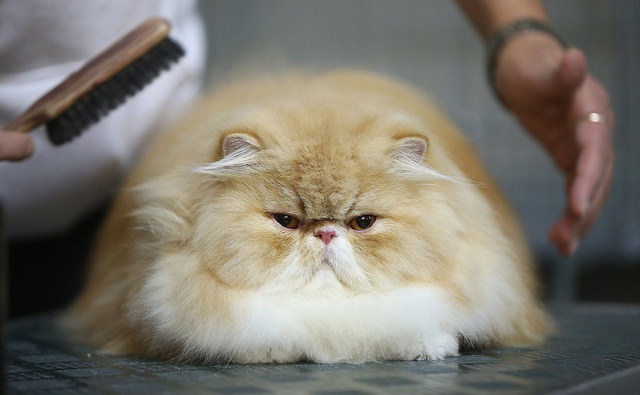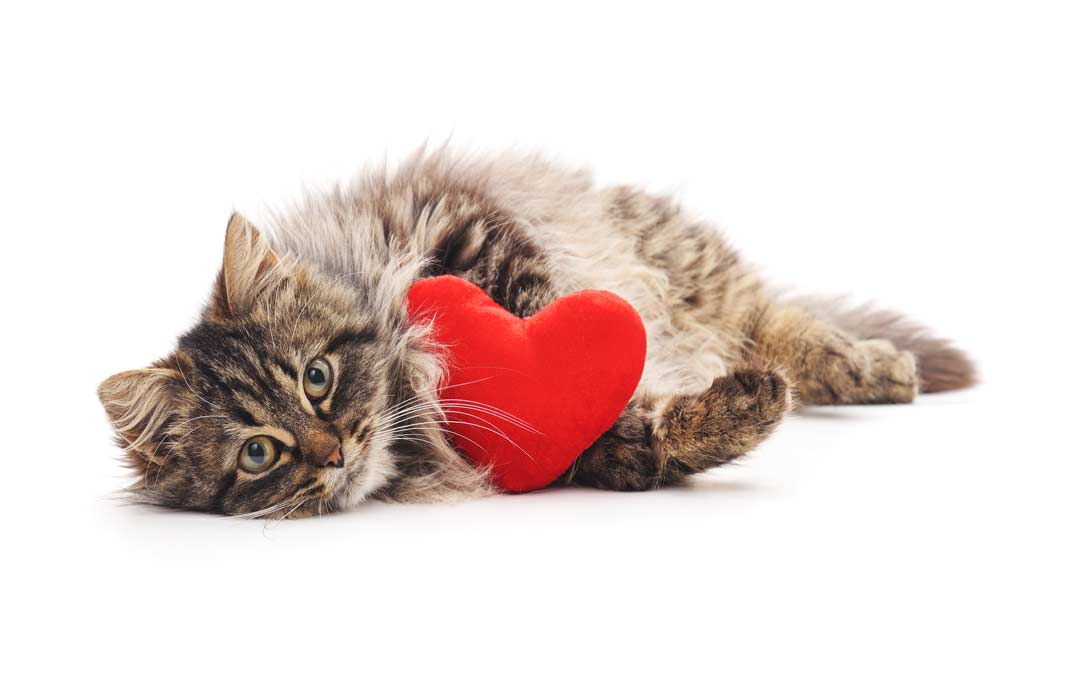
Importance of Cat Grooming for Your Cat
In this Post - The Importance of Cat Grooming
Our amazing feline friends are very clean by nature and they can spend hours grooming themselves daily. Despite the amount of time your cat spends daily to smooth down its coat, clean its paw pads, and wash its face, it still needs some cat grooming aid from you.
Regularly grooming your cat is vital because of its well-being. It is the best way for you to observe any changes to its fur, skin, teeth, and nails that may indicate any health issues or the presence of parasites.
Your cat’s grooming routine needs to be pleasant for both of you. Approach the whole process gently and slowly. Always stop if your cat appears uncomfortable, and just repeat the process later. The best way to start getting your cat accustomed to grooming is from when it is quite young. Offer rewards for good behavior until it becomes accustomed to your pampering.
Benefits of brushing for Cat Grooming
Regular brushing, especially for longer-haired cats, helps remove dead hair and dirt from its coat. In turn, this ensures your cat’s fur doesn’t matt to the point where it becomes unmanageable. Brushing also helps prevent a buildup of hairballs in your cat’s digestive system.
Hairballs are a result of your cat’s natural grooming habits. Their tongues are specially designed with tiny hook-like growths to remove the hair they are shedding. Normally, the hair passes through their digestive tract, but sometimes some hair stays behind in their stomachs. As the hair collects in the stomach, gradually a hairball is formed. This your cat will present to you by vomiting it out of its esophagus, leaving the cleaning up for you.
Another benefit of brushing your cat regularly is a huge decrease in the number of hairs it sheds in your home. A final bonus – brushing allows you to have positive interactions with your cat, leading to better bonding between you.
Brushing tips:
- Brush your cat at least once a week if it is short-haired and more often for a long-haired breed.
- Get the right grooming tools for brushing your cat. Bristle brushes and grooming mitts are popular, but if in doubt ask a cat groomer or your veterinarian.
- Before using the brush, allow your cat to familiarize itself with it.
- Start by brushing gently, where she likes to be stroked. This is usually under the chin and along the back.
- As your cat grows accustomed to the brushing, it becomes more comfortable. Start introducing a gentle brushing of its abdomen, tail, and legs.
- If your cat may start to object when you introduce new areas, go back to brushing those areas it prefers.
- Initially, your cat’s grooming sessions need to be short, work toward gradually increasing the time until it sits through a whole brushing session.
Should you bathe your cat?
Bathing is not typically necessary for your cat unless it has stubborn dirt that can’t easily be removed, your cat can’t groom itself, or has a skin condition that requires bathing.
You can bathe your cat at home, but if you feel it will be difficult take it to a professional pet groomer.
Home bathing tips:
- Always use a mild shampoo for cats and warm water.
- Only wash your cat’s body with shampoo.
- Wipe its face with a damp washcloth.
- The whole process needs to be gentle and fast to reduce stress.
Cat Shaving
Long-haired cats often suffer terribly during the hotter months. Shaving can help keep it cool and comfortable. Some people also shave their cats to keep their fur mat-free. Don’t undertake shaving on your own because you may accidentally nick your cat. A pet grooming salon or your veterinarian knows how to do it safely.
Cats and Nail Trimming
You may notice that your cat’s nails are sometimes rough or prickly. The cause of this can be because it was caught on a mat or your furniture. Your cat should get used to having its nails trimmed regularly for its own comfort and to prevent it from scratching you when you play. But, before attempting to trim its nails, you must first get it used to having its paws touched.
As always, start slowly by touching its paws. Do this by gently pressing on one of its paw pads when it is sitting calmly by you. You will notice that with a gentle push onto the paw pad, your cat’s nails extend.
Once your cat gets used to this, you can attempt cutting its nails. Only trim the white tips of its nails. Avoid the quick, which is in the pink part of the nail that contains blood vessels and nerves. If you do cut it, it causes discomfort and bleeding.
Nail trimming tips:
- Place your cat on your lap, facing away from you.
- Hold your cat gently as you trim its nails.
- Press on each paw to extend its nails and gently trim the tips.
- You can repeat this every two to three weeks.
- Your cat should get accustomed to nail trimming if you don’t take too long. It is a painless procedure.
- If you or your cat aren’t comfortable, a grooming professional is the best option.
Paw Care
Clean paws are important for your cat’s overall health. Besides walking on them, your cat uses its paws for its grooming routine, and any dirt there will inevitably find its way into your cat’s mouth. Remove any thorns and wipe its paws with a damp cloth regularly.
Importance of dental care as a part of Cat Grooming
Cats living in the wild have a different diet to your house cat. They keep their teeth clean by chewing on bones or grass. Remember, your cat can’t tell you if it is in pain, so preventative dental hygiene is the best way to ensure its ultimate health. Regularly check the state of your cat’s teeth and gums to ensure that there are no obvious issues.
Eight out of ten cats over the age of three have problems with their teeth and gums, caused by bacteria, plaque, and debris. Plaque forms on the outside of their teeth from the food they eat. With time, this coating of germs hardens to form tartar which starts to irritate their gums and leads to gingivitis. All this can eventually lead to tooth loss. If the tartar scale goes unnoticed, the condition is irreversible.
Any inflammation in your cat’s mouth can make it difficult for it to eat or drink. In some cases, the bacteria can enter its bloodstream, damaging the kidneys or other vital organs.
Periodontal disease is the most common disease in cats, but it is preventable with good oral hygiene and an annual visit to the veterinarian.
Check your cat’s mouth regularly for any signs of dental issues. Its teeth should be white, clean, and free of chips. Check for any foreign objects, like string, stuck between the teeth. Its gums and the rest of its mouth must have a healthy pink color with no signs of ulcers, bumps, redness, bleeding, or swelling.
Take note of your cat’s breath too. A bad odor usually indicates infection, either in the mouth or somewhere else in its body. A check-up is the best way to determine the cause. Other signs that could indicate dental disease include drooling, difficulty swallowing, changes in weight or eating patterns, and pawing at the face.
Keeping your cat’s teeth and gums healthy is not difficult with regular tooth brushing. This should be done at least twice a week, but you can also do it daily. It’s vital to get your cat used to this from when it’s a kitten, otherwise, it will resist.
Teeth brushing tips:
- The sooner you start, the quicker your kitten will get used to having its teeth brushed.
- Use a piece of gauze covered in toothpaste specially made for cats.
- You can also use a rubber toothbrush or finger brush specially designed for cats.
- Never use your toothpaste on your cat because the fluoride is bad for them.
- Never use dental floss on your cat because it may swallow it, causing intestinal damage.
- You can buy a complete dental care kit from a pet store, groomer, or veterinary clinic.
- Try covering your finger in some liquid from a can of tuna to make the experience more pleasant.
- Cradle your cat from behind and gently tilt its head back.
- Lift its chin to open its mouth, making it easier for you to access its teeth.
Other cat grooming tips
- From the beginning, get your cat used to a daily paw massage. Do this by running your hand down each of its legs, and gently squeezing the center of the paws. This is the first step to getting your cat used to nail trims.
- It is easier to groom your cat on a countertop with it facing away from you. Otherwise, try sitting on the floor with your cat between your legs. Some cats feel most comfortable when you are sitting in a chair, holding them in your lap.
- If your cat has severely matted hair, don’t cut it with a scissor. It’s best to let a pet groomer handle the situation.
- Your cat’s whiskers are critical to its safety. NEVER cut or trim them.
- Watch out for any signs indicating a health issue and call your veterinarian clinic. These include too much or too little grooming. Sometimes problems like obesity and arthritis make it difficult for your cat to reach certain areas of its body. If you notice your cat licking, biting, or scratching more than usual, it could have a skin or behavioral issue.
Cat grooming plays a vital role in your cat’s well-being and is a great opportunity for you to bond. However, if you find it too traumatic to maintain your cat’s physical appearance, find a pet groomer near you: https://www.petgroomerfinder.com




